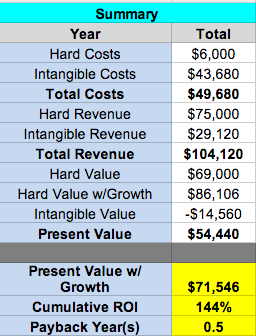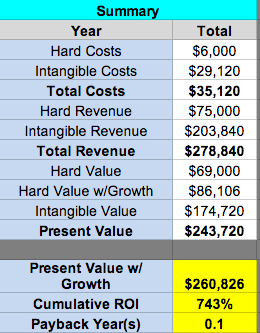Without a doubt, car commuting is the Enemy of the early retiree. Using a car regularly is costing you BIG dollars and keeping you on the financial treadmill longer than necessary. Not that I don’t understand the allure of car ownership. The car lifestyle is extremely convenient and enjoyable, but it is very clear to me now that it just isn’t worth the cost.
This is an important topic, so I plan to cover it in two parts. This is the first part and looks at how much money you would save by getting rid of your car completely in favor of other modes of transportation. The second part will be a similar exercise, but less severe since it assumes you keep your car and just use it less frequently. The idea is that a 2+ person household could more easily eliminate one of 2+ cars while a single person household is more likely to simply use a car less.

Each part will look at three scenarios:
- Take public transit instead
- Ride a bike instead (no exercise benefit dollars)
- Ride a bike instead (with exercise benefit dollars)
Post 1: Breaking up with your car
Scenario 1: Sell your car and take public transit instead
- 10-Year NPV: $51,617
- 10-Year ROI: 74%
- 10-Year Payback: 0.6 years

Scenario 2: Sell your car and ride a bike instead (no exercise benefit dollars)
- 10-Year NPV: $71,546
- 10-Year ROI: 144%
- 10-Year Payback: 0.5 years

Scenario 3: Sell your car and ride a bike instead (with exercise benefit dollars)
- 10-Year NPV: $260,826
- 10-Year ROI: 743%
- 10-Year Payback: 0.1 years

Commentary
Here is the basic message: at a minimum, car commuting costs about $5,000 per year. This works out to about 6 weeks of work for a typical American. In other words, the average American is giving up 1.5 months of wages for the privilege of driving versus biking or taking the bus, and this is after accounting for the longer commute times on a bike or bus.
The worst-case scenario is that you are giving up almost $26,000 per year in transportation and opportunity costs by driving instead of riding a bike. This is more than 50% of the typical American’s income.
Alright, message received loud and clear, but where do the numbers come from?
The first scenario where you make/save $51,000 over 10 years by selling your car and riding public transit relies on two main drivers. The costs are all time costs, as it generally takes about twice as long to commute via public transit in the U.S. The revenues or savings come from money not spent on driving, which would be 50 cents a mile x 15,000 miles x 10 years = $75,000.

The second scenario where you make $71,500 over 10 years by trading your car in for a bike works largely in the same way as the first, but your time is worth 50% less in this scenario because you are killing two birds with one stone: exercising and commuting to work.
Before I move on to the third scenario, I want to point out that my numbers are actually more conservative than some other figures you will see because I am including the intangible costs of time. If time costs were not included, my ROI and NPV numbers would be much more impressive, but I think it is the fair thing to do…your time is valuable.
Lastly, on the scenario where you trade in your car for a bike and walk away with $260,000 total over 10 years, all the same factors are at play as in the other bike scenario. However, there is one new intangible revenue or savings category that I included in this calculation: the life-extending benefits of exercise. Some newer medical studies (see sources below) argue that each minute of exercise can add 7+ minutes to your total life. So for this example, I multiplied the total time spent exercising by 4 (to be on the conservative side) by an hourly time value of $5 (more free time when you are older means it is worth less). This added $189,000 in savings versus example two, but these are legitimate extra hours in your life. I think it is fair and wise to look at things like this; your future self will thank you.
That is the basic gist of it. Here is a link to the spreadsheet where you can download the file and customize it based on your own assumptions, preferences, and beliefs. Below is a more detailed list of my sources and assumptions. Hopefully this gives you the motivation you need to pick up that bike more often, or at least leave the car at home on occasion. I know it was a real kick in the ass for me!
Stay tuned for part 2!
Assumptions and sources

- Public transit monthly pass = $150 (Portland and NYC, overestimated for cushion)
- Occasional car/taxi rental = $500 per year (estimate – all scenarios)
- Public transit time costs = $7 per hour (vs. $10) due to multi-tasking
- Average car commute = 16 miles or 24 minutes (2009 U.S. census)
- Average public transit commute = 48 minutes (2009 U.S. census)
- Average bike commute = 72 minutes for 16 miles or 4.5 minute mile (estimate, census)
- Estimated 8 days of “commuting” per week for public transit to account for errands and such (estimate)
- Estimated 7 days of “commuting” per week on a bike to account for errands and such (estimate)
- 15,000 miles driven per year at 50 cents per mile (AAA, EPA, NYTimes)
- New bike every 5 years at $250 (estimate)
- Bike maintenance every year at $50 (estimate)
- Bike time costs = $5 (vs. $10) due to exercise synergy (estimate)
- End of life time costs = $5 (vs. $10) due to excess supply of time (estimate)
- Exercise time adds 4x as many minutes to your life (PLOS Medicine)
- Savings grow at an inflation-adjusted rate of 4% per year
Updates
My very good friend (and serious cyclist) insisted that my bike cost estimates were too low. He was thinking closer to at least $500 for a bike you can use every day and then closer to $200 for maintenance and upkeep every year. I ran the numbers and it shaves about $3,400 off the value of bike commuting (no exercise benefits).